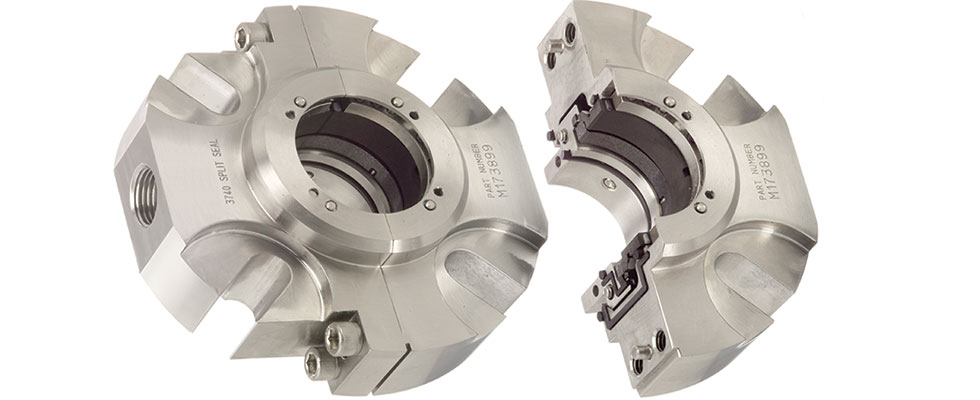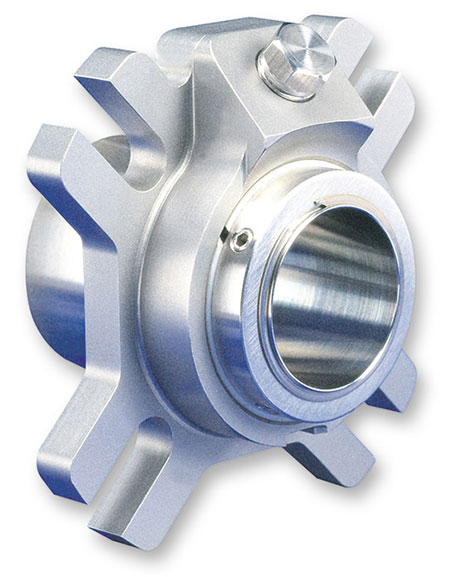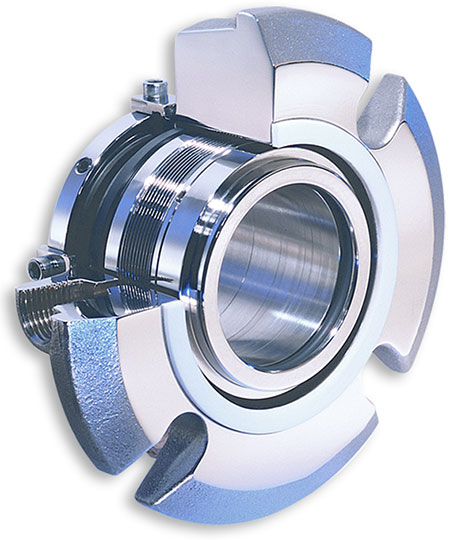
Water treatment facilities rely on mechanical seals in their pumps and other rotating equipment to produce potable water—better known as drinking water. They are a safeguard against many potential health hazards.
Mechanical seals help prevent pump leaks and outside contamination from entering the water flow during potable water processing. They keep rotating equipment, large and small, running dependably and effectively. As a result, users are better protected from ingesting raw, untreated water that could potentially cause serious health issues.
Before 1988, it was common for mechanical seals to be approved as a component within a larger assembly, such as a pump. This put the burden of approval on mechanical seal users and limited the seals’ use to the approved assembly.
Today, in most areas, the mechanical seals used in potable water processes must meet the National Sanitation Foundation/American National Standards Institute/Canadian guidelines (NSF/ANSI/CAN) 61: Drinking Water System Components –Health Effects standard for municipal water treatment systems and products. The standard sets health effects criteria for chemical contaminants from materials, components and devices that may leach into drinking water.
Within the United States, 49 state drinking water agencies have requirements for centralized water treatment plants and distribution system components to comply with NSF/ANSI/CAN 61. In Canada, 11 provinces/territories require drinking water system components to comply with the requirements of the standard.
Mechanical seal manufacturers generally offer product options to meet NSF/ANSI/CAN 61, including a comprehensive range of elastomer bellows, O-ring pushers, standard cartridge seals and split seals. While cartridge and split mechanical seals often share similar mean time between failure (MTBF) rates, there are important technical, cost and maintenance differences water treatment facility managers must consider when choosing the right seal for the potable water application.
Split Seals
As the name implies, split seals are divided into two pieces. They are used on large potable water processing rotating equipment, especially on pumps with shaft sizes exceeding 3 inches.
Split seals are most often specified for large pumps because of the time, production losses and other costs associated with removing the heavy rotating equipment from service. They can be installed without hoisting the pump from the foundation pad, saving many hours in installation time compared to other seals.
At the same time, split seals require a considerable amount of know-how and training to properly connect the rotating pump shaft with other equipment. For example, technicians basically build the seal on the shaft, including properly positioning the O-ring. Oftentimes, leaks are detected when the suction valve is activated because an O-ring was improperly installed, resulting in the need for technicians to start the seal installation or repair from scratch. Another consideration is that water facility managers are always looking at overhead. Split seals are generally more expensive than their cartridge seal counterparts.
Cartridge Seals
While split seals may be the right choice for a large-pump application in a potable water treatment facility, cartridge seals are the preferred choice of plant managers for smaller pumps built with shaft sizes 3 inches or smaller.

Cartridge seals, including standard, O-ring pusher and elastomer bellows variations, are typically an arrangement of seal components on a shaft sleeve and in a seal gland, constituting a single unit that is assembled and preset at the factory.
Aside from costing less than comparable split seals, cartridge seals are quickly and easily installed and removed from pump shafts. This pre-assembled convenience gives water treatment facility technicians important maintenance advantages over split seals. There is less risk of assembly error and assembly damage than with conventional or split seal mechanical seal mounting.
Potable water treatment facilities are barriers between water-borne diseases and healthy communities. These utilities depend on reliable mechanical pump seals to consistently provide clean, potable water and follow NSF/ANSI/CAN 61 for
water purity.
At the same time, managers at these facilities and their parent companies are looking for basic, affordable and easy-to-install seal options, especially with small, simple pumps and rotating equipment. In these instances, cartridge seals provide economical and maintenance benefits. In larger pump applications, split seals are viable and cost-effective options.

In both cases, options for split and cartridge seals give potable water facility managers the tools they need to ensure the reliable flow of potable water, keep their utilities on budget and meet standards for water quality.

